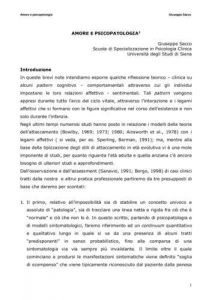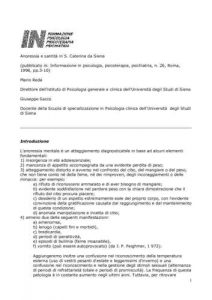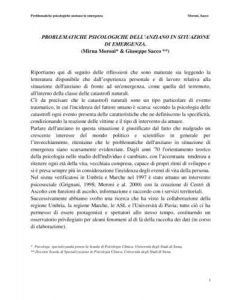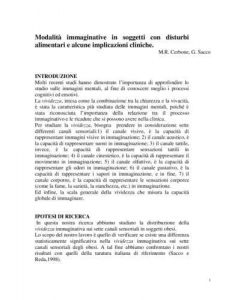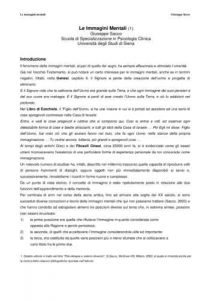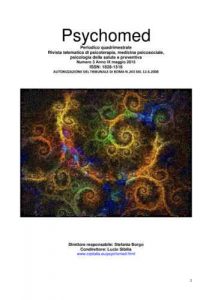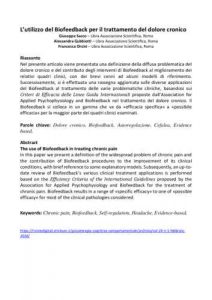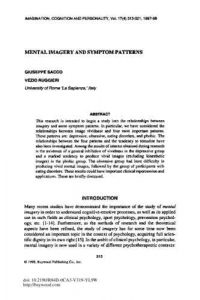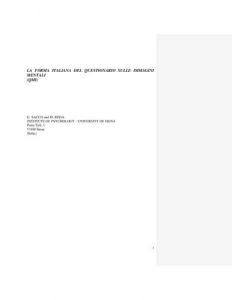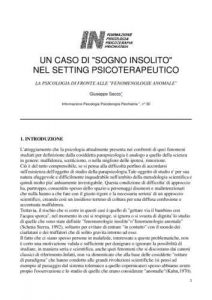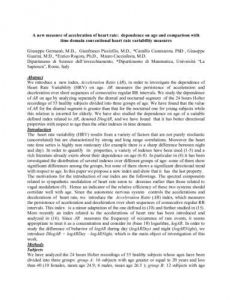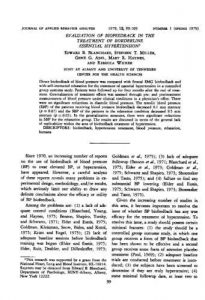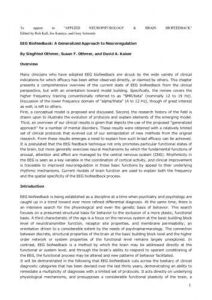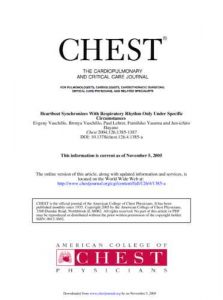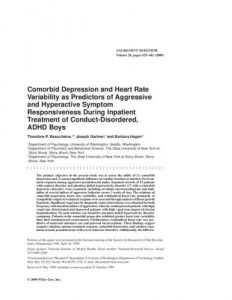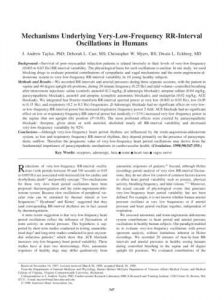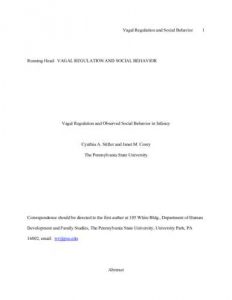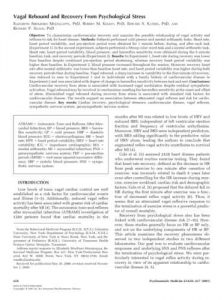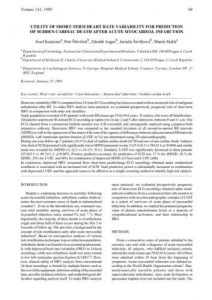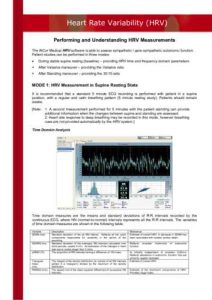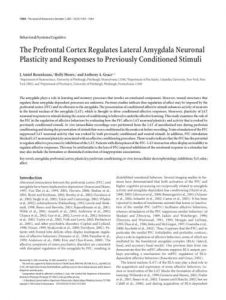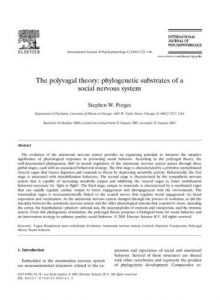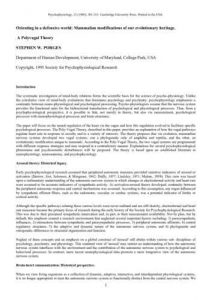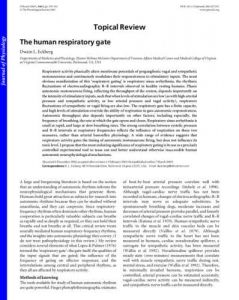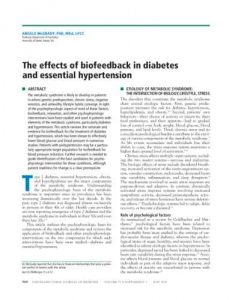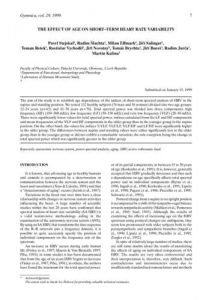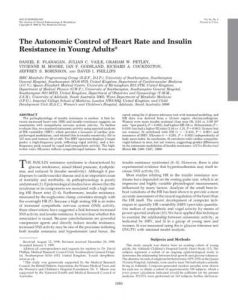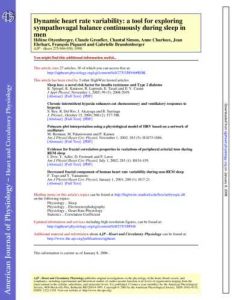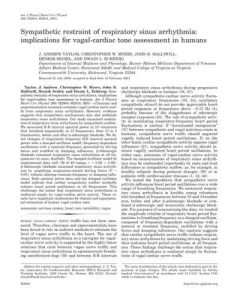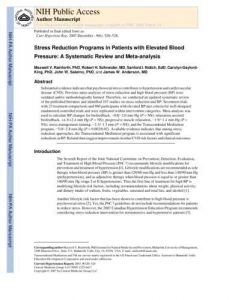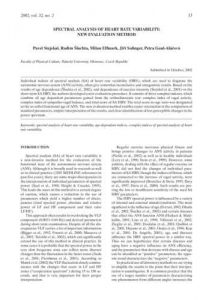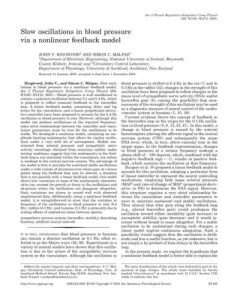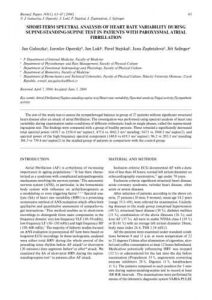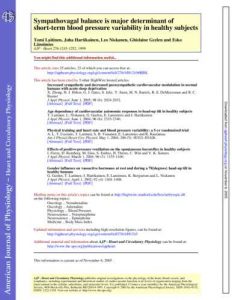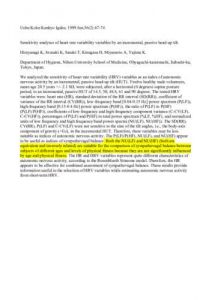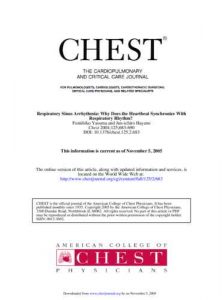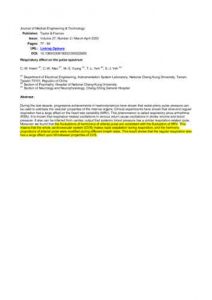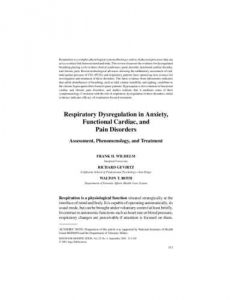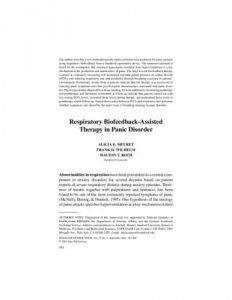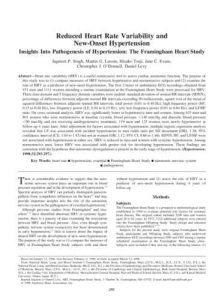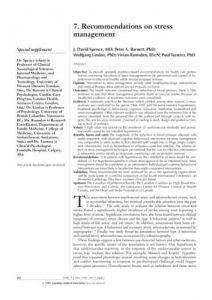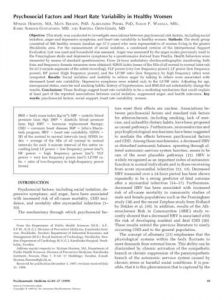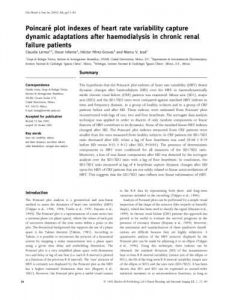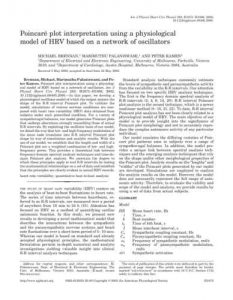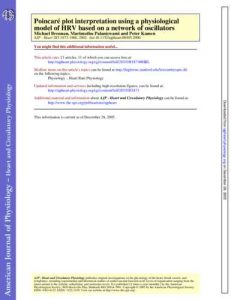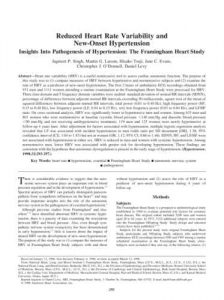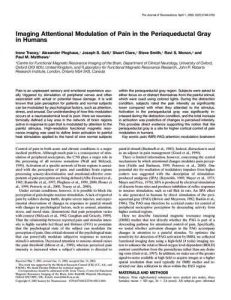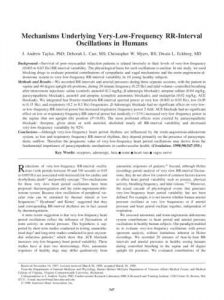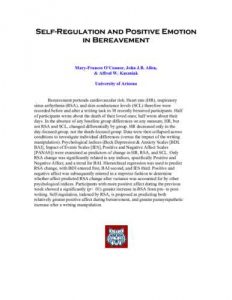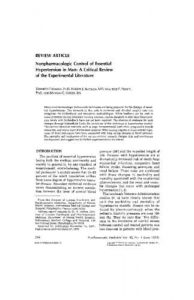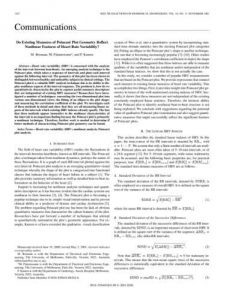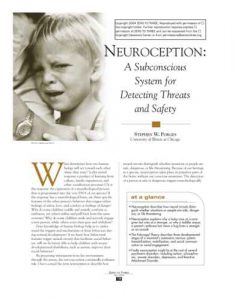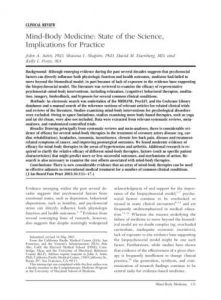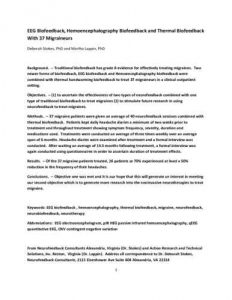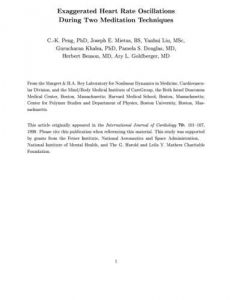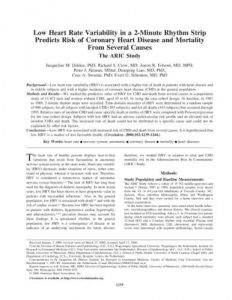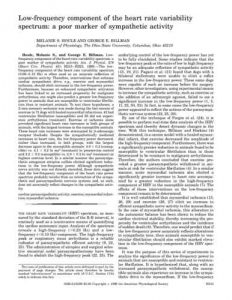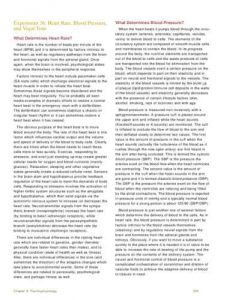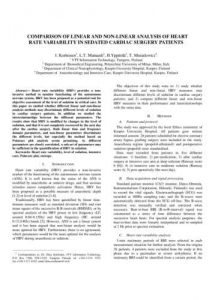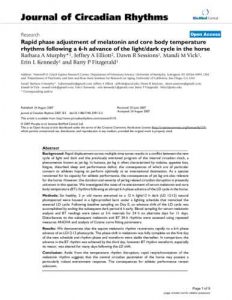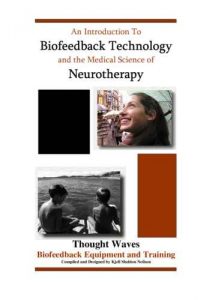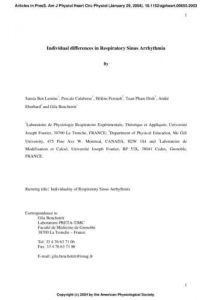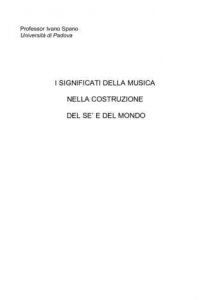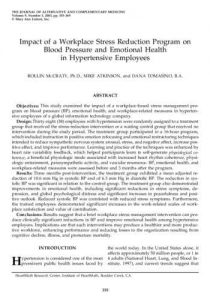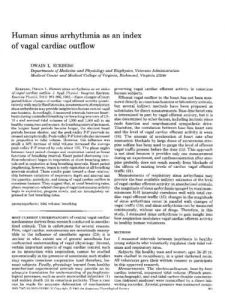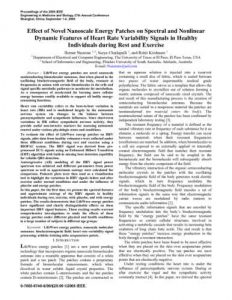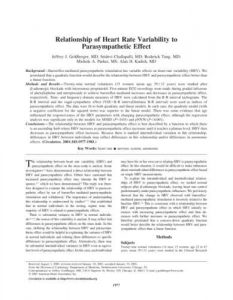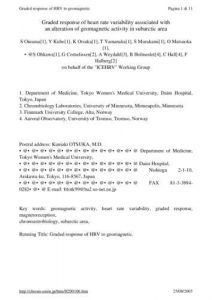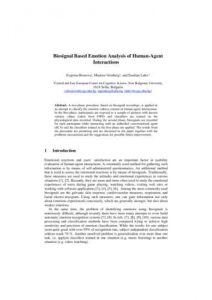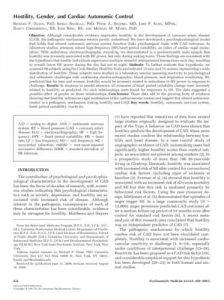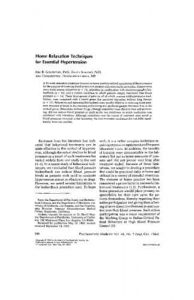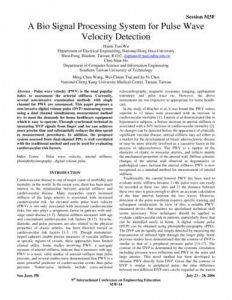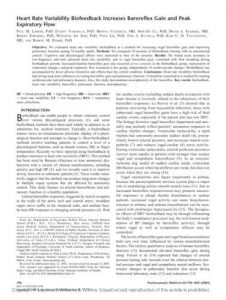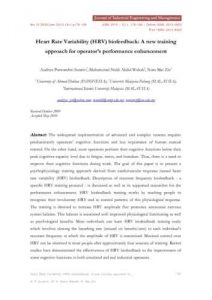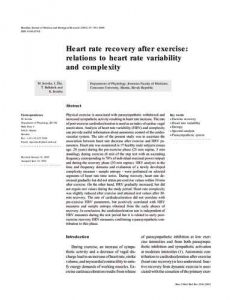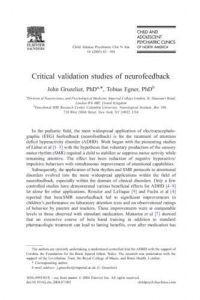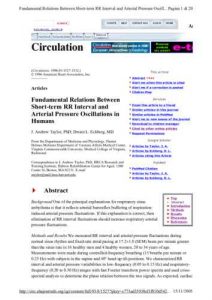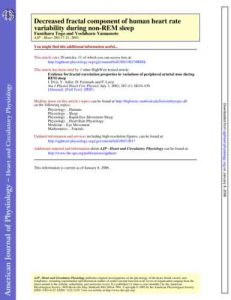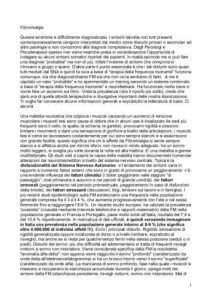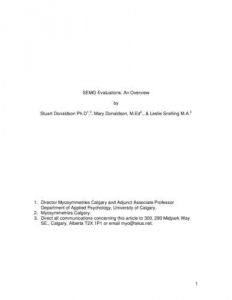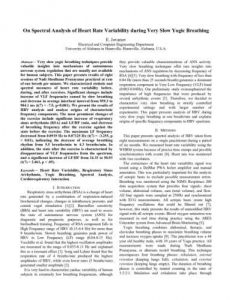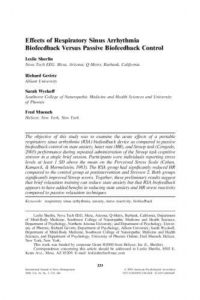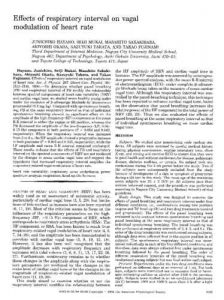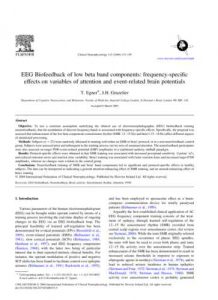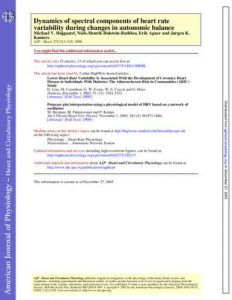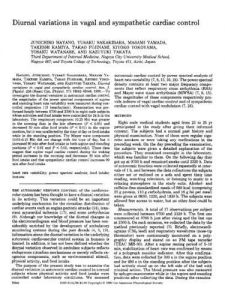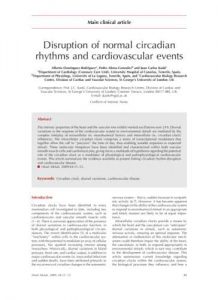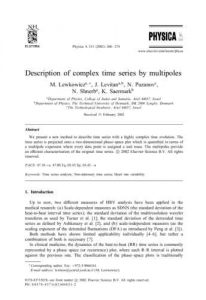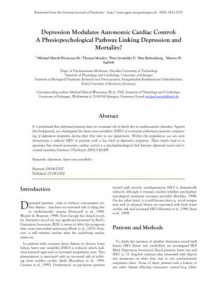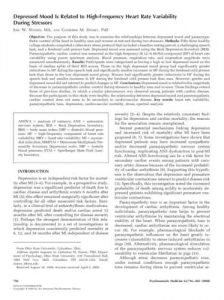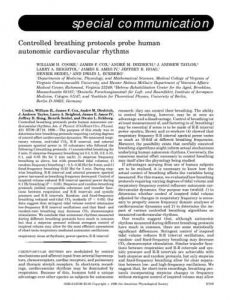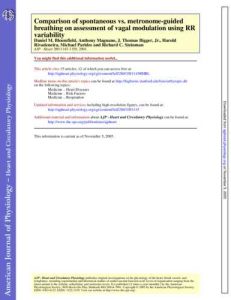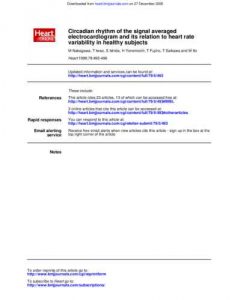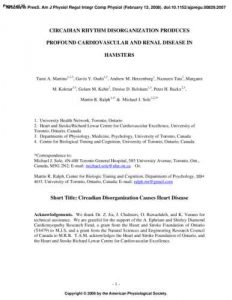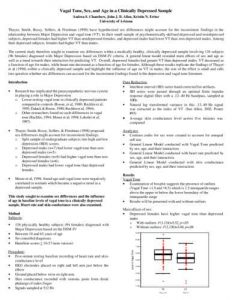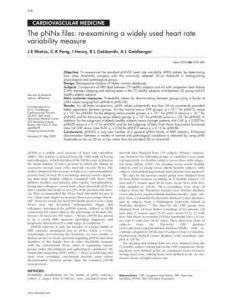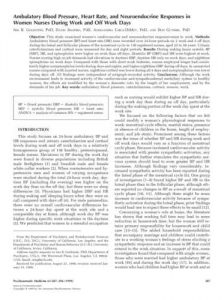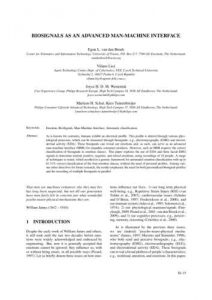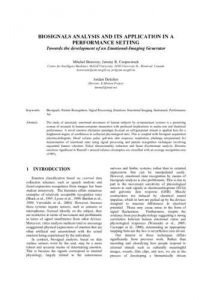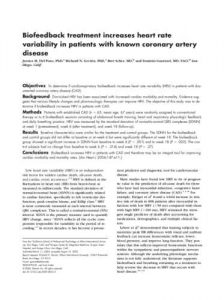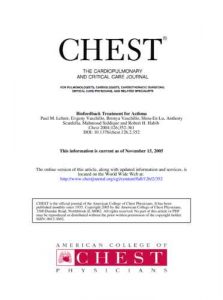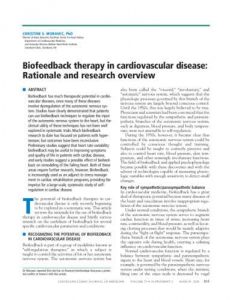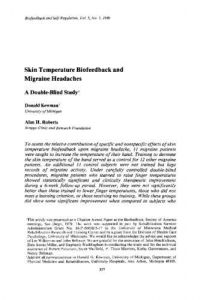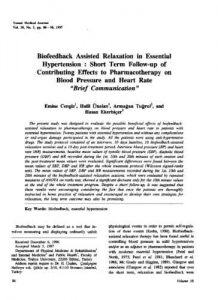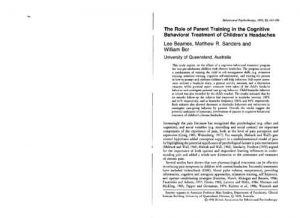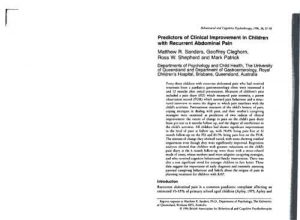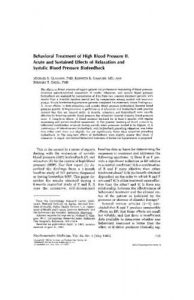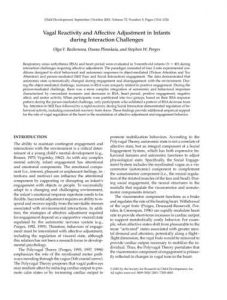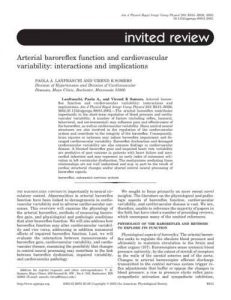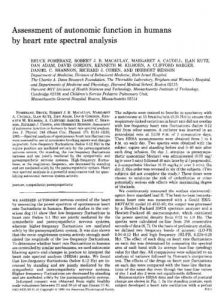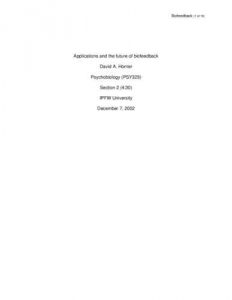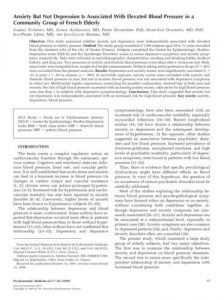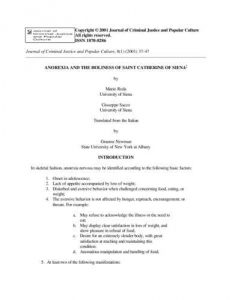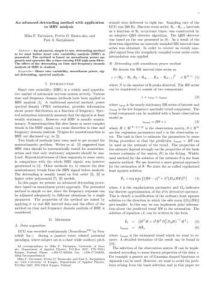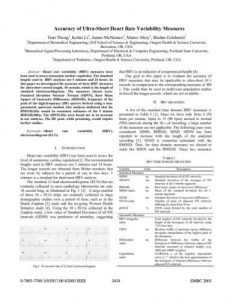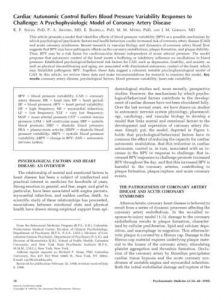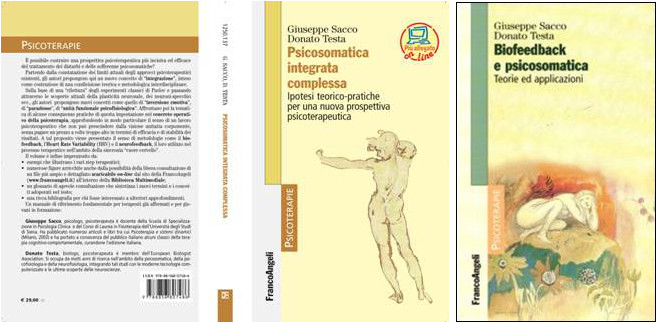Biblioteca scientifica
In questa sezione è possibile trovare una serie di pubblicazioni scientifiche di particolare interesse per chi opera come noi basandosi su un approccio biopsicosociale.
Articoli di Libra
Articoli internazionali
Agnoli A., Anchisi R., Tamburello A. (1979). Il biofeedback in neuropsichiatria e medicina psicosomatica. Centro Italiano Congressi: Roma
Ainsworth M..D.S., Wittig B.A. (1969). Attachment and the exploratory behavior of one-year-olds in a strange situation. In B.M. Foss (Eds.) Determinants of the infant behaviour, Methuen: London
Anastopoulus A.D., Smith J.M., & Wien E.F. (1998). Counseling and training parents. In R.A. Barkley, Attention-deficit hyperacivity disorders: a handbook for diagnosis and treatment (2nd ed.). New York: Guilford Press
Anchisi R., Gambotto M. (1996). Manuale di biofeedback. Torino: Libreria Cortina
Andersen P., Andersen S.A. (1968). Phisiological basis of the alpha rhytm, Appleton-Century-Crofts, New York.
Anders G. (2007). L’uomo è antiquato. Bollati Boringhieri: Torino
Andrasik F. Blanchard E.B., Arena J.G., Saunders N.L. & Barron K.D. (1982). Psychophysiology of recurrent head pain: methodological issues and new empirical findings. Behavior Therapy, 13, 407-429
Andrasik F. (2010). Biofeedback in headache: An overview of approaches and evidence. Cleveland Clinic Journal of Medicine, Vol.77, supplement july
Annebet D., Goedhart et al. (2007). Comparison of time and frequency domain measures of RSA in ambulatory recordings. Psychophysiology. Volume 44, Issue 2, pages 203–215, March
Arena J.G., Blanchard E.B., Andrasik F., Cotch P.A. & Myers P.E. (1983). Reliability of psychophysiological assessment. Behaviour Research and Therapy, 21, 447-460
Arena J.G. (1984). Inter e intra reliability of psychophysiological poststress adaptation periods. Journal of Behavioral Assessment, 6, 247-260
Arena J.G., Blanchard E.B., Andrasik F.,Applebaum K. & Myers P.E. (1985). Psychophysiological comparisons of three kinds of headache sufferers during and between headache states: analysis of post-stress adaptation periods. Journal of Psychosomatic Research, 29, 427-441
Arena J.G., Bruno G.M., Brucks A.G. & Hobbs S.H. (1992). What is an adequate psychophysiological post-stress adaptation period? In Proceedings of the 23rd Annual Meeting of Association for Applied Psychophysiology and Biofeedback, Colorado Springs, Wheat Ridge, CO: Association for Applied Psychophysiology and Biofeedback
Arena J.G., & Blanchard E.B. (1996). BF and relaxation therapy for chronic pain disorders. In R.J. Gatchel & D.C. Turk (eds), Psychological approaches to pain management. Guilford Press: New York
Arena J.G. (2000). Surface electromyographic psychophysiological assessment for chronic pain disorders: the necessity for clinical and research inferences to be empirically verified. Biofeedback, 28, 21-24
Arena J.G. & Schwartz M. S., (2003). Psychophysiological assessment and biofeedback baselines. In M.S Schwartz, F. Andrasik, Biofeedback. A practitioner’s guide. The Guilford Press: New York and London
Arns M., De Ridder S., Strehl U., Breteler M., and Coenen A. (2009). Efficacy of Neurfeedback Treatment in ADHD: the Effect of Inattention, Impulsivity and Hyperactivity: a Meta- Analysis. Clinical EEG and Neuroscience.
Avanzini F., Anselmi M. (2004). L’epidemia delle malattie cardiovascolari nei paesi in via di sviluppo. Assistenza Infermieristica e Ricerca, 2004, 23, 1
Baehr E., Rosenfeld J.P, and Baehr R. (1997). The clinical use of alpha asymmetry protocolin the treatment of depression: two case studies. Journal of Neurotherapy, 293, 10-23
Bandura A. (1997). Self-efficacy: the exercise of control. New York: Freeman
Beckett M., Roden L.C. (2009). Mechanisms by which circadian rhythm disruption may lead to cancer. South African Journal of Science vol.105 no.11-12, Pretoria
Birbaumer N. (1975), Physiologische psychologie, Springer Verlag, Berlin
Blair C, Peters R. (2003). Physiological and Neurocognitive Correlates of Adaptive Behavior in Preschool among Children in Head Start. Developmental Neuropsychology, 24:479–497
Blanchard E.B. (1992). Psychological treatment of benign headache disorders. Journal of Consulting and Clinical Psycholog,y 60:537–551
Blanchard E.B., Andrasik F, Ahles T.A., Teders S.J., O’Keefe D. (1980). Migraine and tension headache: a meta-analytic review. Behavioral Therapy, 11:613–631
Blanco S., Marchi E., Reda M.A. (1984). Risposta paradossale dei pazienti agorafobici all’EMG-BFB training. In P. Pancheri (a cura di) Terapia in Medicina Comportamentale, Roma: Il Pensiero Scientifico
Blechert J., Michael T., Grossman P., Lajtman M., and Wilhelm F. H. (2007). Autonomic and Respiratory Characteristics of Posttraumatic Stress Disorder and Panic Disorder. Psychosomatic Medicine, November 1, 69(9): 935 – 943
Brener J., Connaly G. (1986). Psicofisiologia cardiovascolare. In L. Stegagno (a cura di), Psicofisiologia. Vol.1. Boringhieri: Torino
Brenner C. (1967). Breve corso di psicoanalisi. Martinelli: Firenze
Brown B.B. (1974). New mind, new body, biofeedback: new direction for the mind. Harper & Row: S.Francisco
Budzynski T., Stoyva J. (1969). An instrument for producing deep relaxation by means of analog information feedback. Journal of Applied Behavior Analysis, 2, 231-237
Budzynski T., Stoyva J. & Adler C.S. (1970). Feedback induced muscle relaxtion: application to tension headache. Behavior Therapy and Experimental Psychiatry, 1, 205-211
Budzynski T., Stoyva J., Adler C.S., & Mullaney D.J. (1973). EMG – BF and tension headache: a controlled outcome study. Psycosomatic Medicine, 35, 484-496
Bueno L., Gue M., Fargeas M.J., Alvinerie M., Junien J.L., Fioramonti J. (1989). Vagally mediated inhibition of acoustic stress-induced cortisol release by orally administered kappa-oppioid substances in dogs. Endocrinology, 124:1788–1793
Buss K.A., Goldsmith H.H., Davidson R.J. (2005). Cardiac reactivity is associated with changes in negative emotion in 24-month-olds. Developmental Psychobiology, 46:118–132
Cacioppo J.T., Berntson G.G., & Anderson B.L. (1991). Psychophysiological approaches to the evaluation of psychotherapeutic process and outcome: contributions from social psychophysiology. Psychological Assessment, 3(3), 321-336
Calkins S.D, Keane S.P. (2004). Cardiac vagal regulation across the preschool period: Stability, continuity, and implications for childhood adjustment. Developmental Psychobiology, 45:101–112
Campbell J.K., Penzien D.B., Wall EM. (2010). Evidence-based guidelines for migraine headache: behavioral and physical treatments. American Academy of Neurology Web site: http://www.aan.com/professionals/practice/pdfs/gl0089.pdf. Accessed Sept 15
Carney RM, Freedland KE, Veith RC. (2005). Depression, the autonomic nervous system, and coronary heart disease. Psychosomatic Medicine, 67 (suppl 1):S29–33
Carver C.S., White T.L. (1994). Behavioral inhibition, behavioural activation, and affective responses to impending reward punishment: the BIS/BAS scales. Journal of Personality and Social Psychology, 67, 319-333
Chambless D.L. & Hollon S.D. (1998). Defining empirically supported therapies. Journal of Consulting and Clinical Psychology, 66, 7-18
Cheng C. (2001). Assessing coping flexibility in real-life and laboratory settings: a multimethod approach. Journal of Personality and SocialPpsychology, 80:814–33
Chiari G., Crebelli M. (1982). Biofeedback, emozione e malattia. Angeli Editore: Milano
Chiari G., Scrimali T. (1984). I fattori psicoterapeutici del biofeedback. Psicologia Contemporanea, XI, 62, 44-49
Children D., Martin H. (1999). The HearthMath Solution. Harper-Collins
Coan J.A., Allen J.J.B. (2003). Frontal EEG asymmetry and the behavioral activation and inhibition systems. Psychophysiology, 40, 106-114
Coan J.A., Allen J.J.B. (2004). Frontal EEG asymmetry as a moderator and mediator of emotion. Biological Psychology, 67, 7-49
Coan J.A., Allen J.J.B. and Mc Night P.E. (2006). A capability model of individual differences in frontal EEG asymmetry. Biological Psychology, 72(2), 198-207
Coen R., Arns M., and Kouijzer M. E.J. (2001). Enduring Effect of Neurofeedback in Children. Neurofeedback and Neuromodulation Techniques and Application.
Davidson R.J. (1992). Anterior cerebral asymmetry and the nature of emotion. Brain and Cognition, 20, 125-151
Davidson R.J.(1993). Cerebral asymmetry and emotion: conceptual and methodological conundrums. Cognitions and Emotions, 7, 115-138
Davidson R.J.(1994). Asymmetric brain function, affective style and psychopathology: the role of experience and plasticity. Developmental and Psychopathology, 6, 741-758
Davidson R.J. (1995). Cerebral asymmetry, emotion and affective style. In R.J. Davidson & K. Hugdahl (Eds.), Brain asymmetry. Cambridge, MA: MIT Press
Davidson R.J. (1998). Affective style and affective disorders: perspectives from affective neuroscience. Cognition and Emotion, 12: 307-30.
Davidson R.J., Lewis D.A., Alloy L.B., Amaral D.G., Bush G., Cohen J.D. et al. (2002). Neural and behavioral substrates of mood and mood regulation. Biological Psychiatry, 52: 478-502
Davidson R.J. (2004). What does the PFC “do” in affect: perspectives on frontal EEG asymmetry research. Biological Psychology, 67, 219-233
De Pascalis V. (1981). Biofeedback e autocontrollo. Quaderni di Psicofisiologia, Roma: Bulzoni Editore
Del Pozo J.M., Gevirtz R.N., Scher B., Guarneri E. (2004). Biofeedback treatment increases heart rate variability in patients with known coronary artery disease. American Heart Journal, 147:E1
Denver J.W., Shawn F. Reed D., and Porges S.W., (2007). Methodological Issues in the Quantification of Respiratory Sinus Arrhythmia, in Biological Psychology, February, 74(2): 286–294.
Diestbier R.A. (1989). Arousal and physiological toughness: implications for mental and physical health. Psychological Rewiev, 96, 84-100
Dunn T.G., Gillig S.E., Ponser S.E., Weil N. & Utz S.W. (1986). The learning process in biofeedback: is it feed-forward or feedback? Biofeedback and Self-Regulation, 11(2), 143-156
Eckberg D.L. (2003). The human respiratory gate. Journal of Physiology, 548:339–352
Edinger J.D., Wohlgemuth W.K., Radtke R.A., Marsch G.R. & Quillian R.E. (2001). Cognitive – behavioural therapy for treatment foe chronic primary insomnia: a randomized controlled trial. Journal of the American Medical Association, 285, 1856-1864
Egner T, Gruzelier JH. (2004). EEG biofeedback of low beta band components: frequency-specific effects on variables of attention and event-related brain potentials. Clinical Neurophysiology, Jan;115(1):131-9.
Elbert T. (1993). Slow cortical potentials reflect the regulation of cortical excitability. In: W.C. McCallum, S.H. Curry, (eds.), Slow Potential Changes in the Human Brain. Plenum, NY; 1993:235–251)
Elliot S., Edmonson D. (2006). The new science of breath, coherent breathing for autonomic nervous system balance, Health and Well – Being, 2nd edition. Allen, TX: Choerence Press
Eppinger H.,& Hess L. (1917). Vagotonia: a clinical study in vegetative neurology. The Nervous and Mental Disease Publishing Company: New York
Epstein L.H. & Abel G.G. (1977). An analysis of BF training effects for tension headache patients. Behavior Therapy, 8, 37-47
Evgeny G. Vaschillo E., Vaschillo B. and Lehrer P.M. (2006).. Characteristics of Resonance in Heart Rate Variability Stimulated by Biofeedback. Applied Psychophysiology and Biofeedback, Vol. 31, No. 2, June
Feinstein R.A., Hains C.S., Hemstreet M.P., Turner-Henson A., Redden D.T., Martin B., Erwin S. & Bailey W.C. (1999). A simple “step-test” protocol for identifying suspected unrecognized exercise-induced asthma in children. Allergy and Asthma Proceedings, 20(3), 181-188
Feedman R. R., Papsdorf J.D. (1976). BF and progressive relaxation treatment of sleep-onset insomnia: a controlled all-night investigation. Biofeedback and Self-Regulation, I, 105-112
Freedman, R. R., Sabharwal, S. C., Ianni, P., Desai, N., Wenig, P., & Mayes, M. (1988). Non-neural beta-adrenergic vasodilating mechanism in temperature biofeedback. Psychosomatic Medicine, 50 (4), 394-401
Freud S. (1976). Introduzione alla psicoanalisi. In Freud Opere, vol. 8, Boringhieri: Torino
Friedman B.H., Thayer J.F. (1998). Autonomic balance revisited: Panic anxiety and heart rate variability. Journal of Psychosomatic Research, 44:133–151
Furedy J.J. (1987). Specific versus placebo effects in BF training: a critical lay perspective. Biofeedback and Self-Regulation, 12, 169-184
Gao J., Ling D. and Wang T.H. (2007). Biofeedback treatment of prehypertension: analyses of efficacy, heart rate variability and EEG approximate entropy. Journal of Human Hypertension 21, 973-975 – December
Garber J,, Zeman J,, Walker L,S. (1990). Recurrent abdominal pain in children: psychiatric diagnoses and parental psychopathology. Journal of the American Academy of Child & Adolescent Psychiatry, 29 :648 –656)
Gazzaniga M.S. (1970). The bisected brain. New York: Appleton-Century-Crofts
Gervitz R.N., Schwartz M.S. (2003). The respiratory system in applied psychophysiology. In M.S Schwartz, F. Andrasik, Biofeedback. A practitioner’s guide. The Guilford Press: New York and London
Giannattasio C., Failla M., Meles E., Gentile G., Grappiolo A., Mancia G. (2002). Efficacy of self-treatment of hypertension at home with device-guided breathing. American Journal Hypertension, 15(4 Pt 2):186A)
Green W.A. (1966). Operant conditioning of the GSR using partial reinforcement. Psychological Review,19, 571-578
Gruzelier J. A. (2006). Validating the efficacy of neurofeedback for optimising performance. Progress in Brain Research Volume 159, 421-431
Gruzelier J.A. (2009). Theory of alpha/theta neurofeedback, creative performance enhancement, long distance functional connectivity and psychological integration. Cognitive Process,10 Suppl 1:S101-9
Guzzi R. (1993). Biofeedback. In C.L. Cazzullo (a cura di), Psichiatria. Roma: Micarelli Ed., 1509-1513
Hamer M. et al. (2010). Hypertension Awareness and Psychological Distress. Hypertension, September 1, 56(3): 547 – 550.
Hammond D.C. (2000). Neurofeedback treatment of depression with the Roshi. Journal of Neurotherapy, 4(2), 45-56
Hammond, D. C. (2001). Neurofeedback training for anger control. Journal of Neurotherapy, 5(4), 98-103
Hammond, D. C. (2003). QEEG-guided neurofeedback in the treatment of obsessive compulsive disorder. Journal of Neurotherapy, 7(2), 25-52
Hammond D.C. (2005a). Neurofeedback treatment for anxiety and affective disorders. Child and Adolescent Psychiatric Clinics of North America, 14, 105-123
Hammond D.C. (2005b). Neurofeedback treatment for depression and anxiety. Journal of Adults Development, 12(2/3), 131-137
Harmon-Jones E., Allen J.J.B. (1997). Behavioral activation sensitivity and resting frontal EEG asymmetry: covariation of putative indicators related to risk for mood disorders. Journal of Abnormal Psychology, 74, 1313-1316
Harmon – Jones E. (2000). Relationship between anger and asymmetrical frontal cortical activity. Psychophysiology, S18
Hassett, A. L., Radvanski, D. C., Vaschillo, E. G., Vaschillo, B., Sigal, L. H., Karavidas, M. K., et al. (2007). A pilot study of heart rate variability (HRV) biofeedback in patients with fibromyalgia. Applied Psychophysiology and Biofeedback, 32, 1–10.)
Hastrup J.L. (1986). Duration of initial heart rate assessment in psychophysiology: current practices and implications. Psychophysiology, 23, 5-17
Hauri P.J., Phels P.J. & Jordan J.B. (1976). BF as a treatment of insomnia. Proceedings of the Biofeedback Research Society, 7th Annual Meeting, Colorado Springs, 34
Hauri P.J. & Ester M.S. (1990). Insomnia. Mayo Clinic Proceedings, 65, 869-882
Hauri P.J. (1991). Sleep hygiene, relaxation therapy and cognitive interventions. In P.J. Hauri (ed.), Case studies in insomnia, Plenum Press: New York
Haynes S.N., Gannon L.R., Orimoto L., O’Brien W.H., & Brandt M. (1991). Psychophysiological assessment of poststress recovery. Psychological Assessment, 3(3), 356-365
Heinrich H., Gevensleben H., Freisleder F.J., Moll G.H. & Rothenberger A.(2004). Training of cortical potential in attention-deficit/hyperactivity disorder: Evidence for positive behavioral and neurophysiological effects. Biological Psychiatry.
Hess W.R. (1954) Diencephalon, Autonomic and Extrapyramidal Functions. Grune & Stratton: New York
Holloway R.L., Spivey R.N., Zismer D.K. & Withington A.M. (1988). Aptitude for treatment interactions: implication for patient education research. Health Education Quarterly, 15(3), 241-257
Holmes T.H., Rahe R.H. (1967). The Social Readjustment Scale. Journal of Psychosomatic Research, 11, 213-218
Holroyd K.A., Penzien D.B., Hursey K.G., Tobin D.L, Rogers L., Holm J.E., M Arcille P.J., Hall J.R., & Chila A.G (1984). Change mechanisms in EMG BF trainiiong: cognitive changes underlying improvements in tension headache. Journal of Consulting and Clinical Psychology,52(6), 1039-53
Homma I. and Masaoka Y. (2008). Breathing rhythms and emotions. Experimental Physiology, 93,9, pp. 1011–1021
Hutchings D.F. & Reinking R.H. (1976). Tension headaches: what form of therapy is most effective? Biofeedback and Self-Regulation, 1, 183-190
International Headache Society (2004). The international classification of headache disorders, 2nd ed. Cephalalgia, 24 (supp1): 8-160
Ishizawa K., Yoshiuchi Y., Takimoto Y., Yamamoto Y., and Akabayashi A. (2008). Heart Rate and Blood Pressure Variability and Baroreflex Sensitivity in Patients With Anorexia Nervosa. Psychosomatic Medicine, July 1, 70(6): 695 – 700)
Jackson J.H. (1958). Evolution and dissolution of the nervous system. In: Taylor J, ed. Selected Writings of John Hughlings Jackson. Stapes Press: London, 45–118
Jennings J.R., Kamarck R., Stewart C., Eddy M., & Johnson P. (1992). Alternate cardiovascular baseline assessment techniques: vanilla or resting baseline. Psychophysiology, 29, 730-742
Jünger E. (2004). L’ operaio. Guanda: Milano
Jurystaa F. et al. (2003) A study of the dynamic interactions between sleep EEG and heart rate variability in healthy young men. Clinical Neurophysiology 114, 2146–2155
Kamiya J. (1968). Conscious control of brain waves. Psychology Today, 1, 55-60
Kamiya J. (1969). Operant control of the EEG alpha rhytm of some of its reported effects on consciousness, in C. Tart (ed.), Altered states of consciousness, Wiley & Sons: London
Karavidas, M., & Lehrer, P. (2006). A pilot study of heart rate variability (HRV) Biofeedback as a treatment for major depression. Biological Psychology, 72, 234–235
Karavidas, M., & Lehrer, P., Vaschillo E., et al. (2007). Preliminary results o fan open label study of HRV-BF for the treatment of major depression. Applied Psychophysiology and Biofeedback, 32, 19-30
Kayiran S., Dursun E., Dursun N., Ermutlu N., Karamürsel S. (2010). Neurofeedback Intervention in Fibromyalgia Syndrome; a Randomized, Controlled, Rater Blind Clinical Trial. Applied Psychophysioly and Biofeedback, July, 8
Keay K.A., Bandler R. (2001). Parallel circuits mediating distinct emotional coping reactions to different types of stress. Neuroscience and Biobehavioral Reviews, 25:669–678
Keizer AW, Verment RS, Hommel B. (2010). Enhancing cognitive control through neurofeedback: a role of gamma-band activity in managing episodic retrieval. Neuroimage. 15;49(4):3404-13
Kennedy J.L. (1959). A possible artefact in electroencephalography. Psychological review, 66: 347-52
Khazan I. (2009).Psychophysiological stress assessment using biofeedback. Journal of visualized experiments, Jul 31;29
Kimmel H.D. (1967). Instrumental conditioning of autonomically mediated behavior. Psychological Bulletin, 67, 337-345
Kimmel H.D., Hill F.A. (1970). An instrumental conditionig method for the treatment of enuresis. Journal of Behavior Therapy and Experimental Psychiatry, 1, 121-123
Kimura D. (1964). Left-right differences in the perception of melodies. Quaterly Journal of Experimental Psychology, 15, 166-171
Klonowski W. et al. (2009). Hybrid Modeling of Cardiopulmonary System, HRV and Consciousness. International Journal of Bioelectromagnetism Vol. 11, No. 1, pp. 38 – 41
Kondo C., Kanter A. (1977). True and false electromyographic feedback: effect on tension headache. Journal of Abnormal Psychology, 12, 30-35
Kropp ., Siniatchkin M., Gerber W.D. (2002). On the pathophysiology of migraine—links for “empirically based treatment” with neurofeedback. Applied Psychophysiol Biofeedback, 27:203–213
Lacey B.C., Lacey J.I. (1974). Studies of heart rate and other bodily processes in sensorimotor behaviour. In Obrist P.A., Black A.H., Brener J., DiCara L.V. (eds.), Cardiovascular psychophysiology: current issues in response mechanism,biofeedback and methodology. PubliMed: Chicago: 538-64.
Lacey J.I. (1967). Somatic response patterning and stress: some revisions of activations theory. In M.H. Appley, R. Trumbull (eds.), Psychological stress: issue in research. Appleton-Century-Crofts: New York, 14-42.
Lacey J.I., Lacey B.C. (1970). Some autonomic-central nervous system interrelationships. In P. Black (ed.), Physiological correlates of emotion, Academic Press, New York.
LaCroix J.M. (1984). Mechanism of biofeedback control: on the importance of verbal(conscious) processing. Psychophysiology, 18, 573-587
Lamine S.B.et al. (2004). Individual differences in Respiratory Sinus Arrhythmia. American Journal of Physiology and Heart Circulation Physiology. January 29, 10.1152
La Vaque, T. J., Hammond, D. C., Trudeau, D., Monastra, V., Perry, J., Lehrer, P., Matheson, D., & Sherman, R. (2002). Template for developing guidelines for the evaluation of the clinical efficacy of psychophysiological interventions. Applied Psychophysiology & Biofeedback, 27(4), 273-281
Learman L.A., Avorn J., Everitt D.E., & Rosenthal R (1990). Pygmalion in the nursing home: the effects of caregiver expectations on patient outcomes. Journal of American Geriatric Society, 38(7), 797-803
Leary A., Katz L.F.D. (2004). Coparenting, family-level processes, and peer outcomes: The moderating role of vagal tone. Development and Psychopathology, 16:593–608
Lee H.P., Su Y.C., Hou S.Y. (2009). The application of relaxation techniques and biofeedback to an outpatient with depression disorder: a nurse’s experience. Hu Li Za Zhi,;56 (6):101-8)
Legewie, H., Nusselt, L. (1975). Biofeedback therapie. Urban and Schwarrenberg: Monaco
Lehrer P. M., Vaschillo E., Vaschillo B., Lu, S. E., Eckberg D. L., Edelberg R., et al. (2003). Heart rate variability biofeedback increases baroreflex gain and peak expiratory flow. Psychosomatic Medicine, 65, 796–805
Lehrer, P., Vaschillo, E., Vaschillo, B., Lu, S., Scardella, A., Siddique, M., & Habib, R. (2004). Biofeedback Treatment for Asthma. Chest, 126, 352–361
Lehrer, P. M. (2007). Biofeedback training to increase heart rate variability in P. M. Lehrer, R. L. Woolfolk, & W. E. Sime, Eds.. Principles and Practice of Stress Management 3rd ed., pp. 227-248. The Guilford Press: New York
Leite-Panissi C.R., Coimbra N.C., Menescal-de-Oliveira L. (2003). The cholinergic stimulation of the central amygdala modifying the tonic immobility response and antinociception in guinea pigs depends on the ventrolateral periaqueductal gray. Brain Research Bulletin, ;60:167–178
Licht C.M., de Geus E. J., et al. (2008). Association Between Major Depressive Disorder and Heart Rate Variability in the Netherlands Study of Depression and Anxiety. Archivies of General Psychiatry, December 1, 65(12): 1358 – 1367.
Licht C.M.et al. (2010). Increased Sympathetic and Decreased Parasympathetic Activity Rather Than Changes in Hypothalamic-Pituitary-Adrenal Axis Activity Is Associated with Metabolic Abnormalities. Journal of Clinical Endocrinology & Metabolism May 1, 95(5): 2458 – 2466)
Linden W. (1991). What do arithmetic stress test measure?: protocol variations and cardiovascular responses. Psychophysiology, 28(1), 91-102
Lowen A. (1984). Il Piacere. Astrolabio: Roma
Lowen A. (1990). La spiritualità del corpo. Astrolabio: Roma
Lowen A. (1994). Arrendersi al corpo. Astrolabio: Roma
Lubar J.F. & Shouse M.N. (1976). EEG and behavioral changes in a hyperkinetic child concurrent with training of the sensorimotor rhythm (SMR): A preliminary report. Biofeedback and Self-Regulation.
Lubar J. O. & Lubar J.F.(1984). Electroencephalographic biofeedback of SMR and beta for treatment of attention deficit disorders in a clinical setting. Biofeedback and Self Regulation.
Lubar J.F., Swartwood J.N., & O’Donnell P.H. (1995). Evaluation of effectiveness of EEG – NFT for ADHD in a clinical setting as measured by changes in T.O.V.A. scores, behavioral ratings and WISC-R performance. Boifeedback and Self-Regulation, 20, 83-99
Luskin .F, Reitz M., Newell K., Quinn T.G., Haskell W. (2002). A controlled pilot study of stress management training of elderly patients with congestive heart failure. Preventive Cardiology, 5:168–172.
Malarvili, M. B. and Mesbah, M. (2008). Combining newborn EEG and HRV information for automatic seizure detection. Engineering in Medicine and Biology Society
Malpas S. C. (2010). Sympathetic Nervous System Overactivity and Its Role in the Development of Cardiovascular Disease. Physiological Reviews, April 1, 90(2): 513 – 557)
Mann C.A., Lubar J.F., Zimmerman A.W., Miller B.A., & Meunchen R.A. (1992). Quantitative analysis of EEG in boys with ADHD. A controlled study with clinical implications. Pediatric Neurology, 8, 30-36
Markovitz J.H, Matthews K.A, Kannel W.B., Coob J.L., D’agostino R.B. (1993). Psychological predictors of hypertension in the Framingham study. Is there tension in hypertension? Journal of the American Medical Association, 270: 2439-2443)
Martinez J.M., Garakani A., Kaufmann H, Aaronson C. J., and. Gorman J. M. (2010). Heart Rate and Blood Pressure Changes During Autonomic Nervous System Challenge in Panic Disorder Patients. Psychosomatic Medicine, June 1, 72(5): 442 – 449).
Masaoka Y. & Homma I (2001). The effect of anticipatory anxiety on breathing and metabolism in humans. Respiratory Physiology 128, 171–177
Marcuse H. (1968). L’uomo a una dimensione. Einaudi: Torino
McCraty, R. (2003). The scientific role of the heart in learning and performance. (Publication No. 02-030, 2003). Boulder Creek, CA: HeartMath Research Center, Institute of HeartMath
McCraty R., Atkinson M., Tomasino D., Bradley R.T. (2006), The coherent heart, HeartMath Research Center, Institute of HeartMath
McCraty R., & Tomasino D. (2004, November). Heart Rhythm Coherence Feedback: A New Tool for Stress Reduction, Rehabilitation, and Performance. Enhancement. Paper presented at the First Baltic Forum on Neuronal Regulation and Biofeedback, Riga, Latvia
McFarland B.R., Shankman S.A., Tenke C.E., Bruder G.E. and Klein D.N. (2006). Behavioral activation system deficits predict the six-month course of depression. Journal of Affective Disorders, 91(2-3), 229-234
McGrady A.V., Linden W. (2003). Biobehavioral treatments of essential hypertension. In: Schwartz M, Andrasik F, eds. Biofeedback: A Practitioner’s Guide. Guilford Press: New York, NY, 382–408
Meaghan L., O’Donnell et al. (2007).Tonic and Phasic Heart Rate as Predictors of Posttraumatic Stress Disorder. Psychosomatic Medicine, 69: 256-261
Medina :, Diamond S. & Franklin M.A. (1976). BF therapy for migraine. Headache, 16, 115-118
Meichenbaum D. (1976). Cognitive factors in BF therapy. Biofeedback and Self-Regulation, 1, 201-216.
Mellon S.H., Griffin L.D. (2002) Neurosteroids: biochemistry and clinical significance. Trends Endocrinol. Metab. 13: 35-43
Miller, N.E. (1969). Learning of visceral and glandular responses. Science, 163, 434-445
Molarius A., & Tegelberg A. Recurrent headache and migraine as a public health problem. Headache, 2006 46, 73–81
Monastra V.J., Monastra D. M. & George S. (2002). The effect of stimulant therapy, EEG biofeedback, and parenting style on the primary symptoms of attention deficit/ hyperactivity disorder. Applied Psychophysiology and Biofeedback.
Monastra V.J. (2003). Clinical applications of EEG-BF. In: Schwartz M, Andrasik F, eds. Biofeedback: A Practitioner’s Guide. Guilford Press: New York, NY, 438–463
Monastra V.J. (2005). Electroencephalographic biofeedback (neurotherapy) as a treatment for attention deficit hyperactivity disorder: Rationale and empirical foundation. Child and Adolescent Psychiatric Clinics of North America.
Morin C.M., Hauri P.J., Espie C.A., Spielman A.J., Buysse D.J. & Bootzin R.R. (1999). Nonpharmacologic treatment of chronic insomnia. Sleep, 22, 1134-1156
Morris J.S., Ohman A., Dolan R.J. (1999). A subcortical pathway to the right amygdale mediating “unseen” fear. Proceedings of the National Academy of Sciences, 96:1680–1685
Moruzzi G., Magoun HW., Brain stem reticular formation and activation of the EEG. Electroencephalography and Clinical Neurophysiology I:455-473, 1949. Ristampato in: Journal of Neuropsychiatry and Clinical Neurosciences. 1995 Spring;7(2):251-67
Mosticoni, R. (1979). Biofeedback e apprendimento. In P. Pancheri (a cura di), Biofeedback. Bulzoni: Roma
Movius H.L.,Allen J.J.B. (2005). Cardiac vagal tone, defensiveness, and motivational style. Biological Psychology, 68:147–162
Mumford J. (1961). Tecnica e Cultura. Il Saggiatore: Milano
Nakagawa M., Iwao T., Ishida S., Yonemochi H., Fujino T., Saikawa T. and Ito M. (1998) Circadian rhythm of the signal averaged electrocardiogram and its relation to heart rate variability in healthy subjects. Heart, 79;493-496
Nakao M., Yano E., Nomura S., & Kuboki T. (2003). Blood pressure-lowering effects of biofeedback treatment in hypertension: a meta-analysis of randomized controlled trials. Hypertension Research, 26(1), 37-46)
Nestoriuc Y., Martin A., Rief W., Andrasik F. (2008). Biofeedback treatment for headache disorders: a comprehensive efficacy review. Applied Psychophysiol Biofeedback, 33:125–140
Nolan R.P., Kamath M.V., Floras J.S., et al. (2005). Heart rate variability biofeedback as a behavioral neurocardiac intervention to enhance vagal heart rate control. American Heart Journal, 49:1137
Nunn C.M., Osselton J.W. (1974). The influence of EEG-alpha rhythm on the perception of visual stimuli. Psychophysiology, 11 (3): 294-303
Nuwer M.R. (1997). Assessment of digital EEG, quantitative EEG and EEG brain mapping report of the American Academy of Neurology and the American Clinical Neurophysiology Society. Neurology, 49, 277-292
Olson R. P. (1987). Definitions of biofeedback. In M.S. Schwartz (2nd ed.), Biofeedback: a practitioner’s guide. New York: Guilford Press
Olsson E.M., El Alaoui S., Carlberg B., Carlbring P., Ghaderi (2010). Internet-based biofeedback-assisted relaxation training in the treatment of hypertension: a pilot study. Applied Psychophysiologic Biofeedback, Jun, 35(2):163-70
Omer H. & London P. (1989). Signal and noise in psychotherapy: the role and control of non-specific factors. British Journal of Psychiatry, 155, 239-245
Palomba D. (1999). L’assessment psicofisiologico. In: O. Codispoti e C. Clementel (a cura di), Psicologia Clinica. Modelli, metodi, trattamenti. Roma, Carocci, pp. 149-170
Paquette V., Beauregard M., Beaulieu D. (2009). Effect of psychoneurotherapy on brain electromagnetic tomography in individuals with major depressive disorder. Psychiatry Research: Neuroimaging, 174, 231-239
Pancheri P. (a cura di) (1979). Biofeedback. Tecniche di autocontrollo in psichiatria, psicosomatica e medicina. Bulzoni: Roma
Pascual-Marqui R.D., Michel C.M. and Lehman D. (1994). Low resolution electromagnetic tomography : a new method for localizing electrical activity in the brain. International Journal of Psychophysiology, 18, 49-65
Pascual-Marqui R.D. (2007). LORETA: low resolution brain electromagnetic tomography. Zurich, Switzerland: The KEY Institute for Brain-Mind Research
Pavan L., Casiglia E., Carvalho Braga L.M., Winnicki M., Puato M., Pauletto P. et al. (1999). Effects of a traditional lifestyle on the cardiovascular risk profile: the Amondave population of the Brazilien Amazon. Comparision with matched Africa, Italian and Polish populations. Journal of Hypertension, 17: 749-756)
Pavlov I.P. (1927). Conditionated reflexes: an investigation of the physiological activities of the cerebral cortex. Oxford Universiy Press: London
Peniston E.G., & Kulkosky P.J. (1989). Alpha-theta brainwave training and beta endorfine levels in alcoholics. Alcohlism: Clinical and Experimental Research, 13, 271-279
Peper E. (1973). Frontiers of clinical BF. In L. Birk (ed.), Seminars in Psychiatry, vol. 5, Grune & Stratton: New York
Pessoa L., Mc Kenna E., Gutierrez E., Ungerleider L.G. (2002). Neuroprocessing of emotional faces requires attention. Proceedings of the National Academy of Sciences (USA), 99, 11:458–463
Pharmaceutiques Annales Françaises (juin 2008), Volume 66, 3, 158-168, J.-L. Elghozi J., Unité de pharmacologie clinique, hôpital Necker, Assistance Publique–Hôpitaux de Paris, 149, rue de Sèvres, 75015 Paris, France
Pietraszek S, Komorowski D. (2009). The simultaneous recording and analysis both EGG and HRV signals. IEEE Engineering in Medicine and Biology Society Conference
Piferi R.L., Kline K.A., Younger J., & Lawler K.A. (2000). An alternative approach for achieving cardiovascular baseline: viewing an aquatic video. International Journal of Psychophysiology, 37, 207-217
Pinna G.D., Maestri R., Raczak G., La Rovere MT. (2002). Measuring baroreflex sensitivity from the gain function between arterial pressure and heart period. Clinical Science, 103:81-88
Pizzagalli D.A., Sherwood R.J., Henriques J.B and Davidson R.L. (2005). Frontal brain asymmetry and reward responsiveness: a source – localitation study. Psychological Science, 16, 805-813
Porges S.W. (1992). Vagal tone: a physiologic marker of stress vulnerability. Pediatrics, 90:498–504
Porges S.W. (2001). The polyvagal theory: phylogenetic substrates of a social nervous system. International Journal of Psychophysiology, 42:123–146
Porges S.W. (2003). Social engagement and attachment: a phylogenetic perspective. Annual of New York Academy Sciences, 1008:31–47
Porges S.W. (2004). Neuroception: A subconscious system for detecting threat and safety. Zero to Three. Bulletin of the National Center for Clinical Infant Programs, 24:5,9-24
Porges S. W. (2007). The polyvagal perspective. Biological Psychology, 74(2): 116–143)
Pumprla J. (2002). Functional assesment of heart rate variability: physiological basis and practical applications. International Journal of cardiology, 84: 1-14
Quilliot D., Fluckiger L., Zannad F., Drouin P., Ziegler O. (2001). Impaired autonomic control of heart rate and blood pressure in obsesity: role of age and of insulin-resistance. Clinical Autonomic Research, 1:79–86
Radvanski, D., Vaschillo, E., Vaschillo, B., Hassett, A., Lehrer, P., & Sigal, L. (2004) Heart Rate Variability Biofeedback for Fibromyalgia Treatment. Applied Psychophysiology and Biofeedback, 29, 308.
Raskin M., Johnson G. & Rondestvedt J.W. (1973). Chronic anxiety treated by feedback-induced muscle relaxation. Archives of General Psychiatry, 28, 263-267
Raymond, J., Varney, C., Parkinson, L. A., & Gruzelier, J. H. (2005). The effects of alpha/theta neurofeedback on personality and mood. Cognitive Brain Research, 23, 287-292
Reda M.A. (1979). Aspetti cognitivi della terapia in biofeedback. In P. Pancheri (a cura di ), Biofeedback. Bulzoni: Roma
Reich W. (1973). Analisi del carattere. Sugar: Milano
Rice D.M., Hagstrom E.C. (1989). Some evidence in support of a relationship between human auditory signal-detection performance and the phase of the alpha cycle. Perceptual and motor skills, 69: 451-7.
Roberts A.H. (1985). Biofeedback. American Psychologist, 40, 938-941.
Roberts A.H. (1986). Biofeedback, science and training. American Psychologist, 41, 1010
Roger J. deBeus and D.A.Kaiser (2011). Neurofeedback with Children with Attention Deficit Hyperactitivity Disorder: A randomized Double- Blind Placebo- Controlled Study. Neurofeedback and Neuromodulation Techniques and Application
Rosenfeld J.P., Cha G., Blair T., and Gotlib I. (1995). Operant BF control of left-right frontal alpha power differences. Biofeedback and Self-Regulation, 20, 241-258
Rosenfeld, J.P. (2000). An EEG biofeedback protocol for affective disorders. Clinical Electroencephalography, 31(1), 7-12
Rosenthal T.L., Montgomery L.M., Shadish W.R., Edwards N.B., Hutcherson H.W., Follette W.C. & Lichstein K.L. (1989). Two new, brief, practical stressor tasks for research purposes. Behaviour Therapy, 20, 545-562
Rosenthal R. (1990). Experimenter expectancy, covert communication, and meta-analytic methods. (Donald T. Campbell Award presentation, American Psychological Association Meeting, August 14, 1989). (ERIC Document Reproduction Service N° TMO 14556-317551)
Rossiter T., & La Vaque T.J. (1995). A comparison of EEG biofeedback and psychostimulants in treating attention deficit hyperactivity disorders. Journal of Neurotherapy
Rottenberg J., Salomon K., Gross J.J., Gotlib I.H. (2005). Vagal withdrawal to a sad film predicts subsequent recovery from depression. Psychophysiology, 42:277–281
Rottenberg J. et al. (2007). RSA fluctuation in major depressive disorder. Psychophysiology Volume 44, Issue 3, pages 450–458, May
Roy J.C., Sequeira H., Delerm B.(1993), Neural control of electrodermal activity: spinal and reticular mechanism, in: Roy J.C., Boucsein W., Flowers D.C., e Gruzelier J.H., Progress in Electrodermal Research, Plenum Press, New York
Roy-Byrne P.P et al. (2008). Anxiety Disorders and Comorbid Medical Illness. Focus 6:467-485, American Psychiatric Association
Rozanski A., (2005). Integrating Psychologic approaches into the behavioral management of cardiac patients. Psychosomatic Medicine 67:S67-S73
Rozanski A., Kubzansky L.D. (2005). Psychologic functioning and physical health: a paradigm of flexibility”, Psychosomatic Medicine, 67:S47-S53
Russ K.L., Adderton M. & Hammer R.L. (1977). Clinical follow-up: treatment and outcome of functional headache patients treated with BF. Biofeedback and Self-Regulation, 2, 298
Rutledge T.,Hogan B.E. (2002). A quantitative review of prospective evidence linking psychological factors with hypertension development. Psychosomatic Medicine, 64,758-766.
Ryan RM, Frederick C. (1997). On energy, personality, and health: subjective vitality as a dynamic reflection of well-being. Journal of Personality. 65:529–65
Sacco G., Sperini M. (1997). Introduzione alla filosofia dei sistemi. Andromeda: Bologna
Sacco G., Ruggieri V. (1998). Mental imagery and symptoms pattern. Immagination, Cognition and Personality, 17(4): 313-321
Sacco G. (2002). Myographic patterns and mental imagery. In G.F. Goldwurm, F. Colombo, S. Masaraki (eds.). Neuropsychophisiology and behavioral intervention in psychosomatics, stress disorders and health promotion. Proceedings of International CIANS Conference 2001, Palermo 3-6 ottobre. CIANS: Milano
Sacco G. (2011, in press). Psicoterapia e sistemi dinamici. Andromeda: Bologna
Sacco G. (2008). L’analisi personale nei gruppi di formazione in psicoterapia cognitivo-comportamentale. In C. Di Berardino (a cura di), L’approccio integrato nella psicoterapia cognitiva di gruppo, Franco Angeli: Milano
Sacco G., Testa D. (2009). Psicosomatica integrata complessa. FrancoAngeli: Milano
Safran J.D., Segal Z.V. (1990). Interpersonal process in cognitive therapy. Basic Books: New York
Sanavio E. (1977). Le applicazioni cliniche e biomediche delle tecniche di biofeedback. Formazione e cambiamento, 2, 51-62.
Sanavio E. (1979). Integrazione delle procedure di biofeedback in più approcci terapeutici. In A. Agnoli , R. Anchisi , A. Tamburello (Eds.). Il biofeedback in neuropsichiatria e medicina psicosomatica. Centro Italiano Congressi: Roma
Sanavio E. (1996). L’assessment psicofisiologico nella clinica comportamentale. In R. Anchisi , M. Gambotto , Manuale di biofeedback. Torino: Libreria Cortina
Sandman C.A, Walker B.B., Berka C. (1982). Influence of afferent cardiovascular feedback on behavior and the cortical evoked potential. In Cacioppo J.T., Petty R.E. (eds.), Perspectives in cardiovascular psychophysiology, Guilford Press, New York
Scott W.C. et al., (2005). Effects of an EEG biofeedback protocol on a mixed substance abusing population. Neuropsychiatric Institute, University of California, Los Angeles, California USA, The American Journal of Drug and Alcohol Abuse, 31:455–469
Scozzari S.,Sarlo R., Arcara G., Ghisi M., Palomba D. (2006). Elaborazione del’informazione emozionale nell’ipertensione arteriosa. Congresso Nazionale AIP Sezione di Psicologia Sperimentale, Rovereto (TN) 13-15 Settembre 2006.
Schein M., Gavish B., Herz M., et al. (2001). Treating hypertension with a device that slows and regularizes breathing: a randomized doubleblind controlled study. Journal Human Hypertension, 15:271–278
Schneider R:H, Egan B.M., Johnson E.H, Drobny H., Julius S. (1986). Anger and anxiety in borderline hypertension. Psycosomatic Medicine, 48: 242-248
Schwartz M. S. (1995). Baselines. In M. S. Schwartz & Associates, Biofeedback: a practitioner’s guide. (2nd ed.), Guilford Press: New York
Schwartz M.S, Schwartz N.M. & Monastra V.J. (2003). Problems with relaxation and BF-assisted relation, and guidelines for management. In M.S Schwartz, F. Andrasik, Biofeedback. A practitioner’s guide. The Guilford Press: New York and London
Scrimali T., Grimaldi L. (1991). Sulle tracce della mente. Angeli Editore: Milano
Scrimali T. (2006). Entropia della mente ed entropia negativa. Milano: Franco Angeli
Scrimali T. (2010). Neuroscienze e psicologia clinica. Milano: Franco Angeli
Servant D., Logier R., Mouster Y.,Goudemand M. (2009). Heart rate variability. Applications in psychiatry. Encephale. Oct;35(5):423-8. Epub 2008 Dec 18. Review. French
Sherling L.H. (2009). Diagnosing and treating brain function through the use of low resolution brain electromagnetic tomography (LORETA). In T.H. Budzynski, H.K. Budzynski, J.R. Evans, A. Abarbanel (Eds.), Introduction to quantitative EEG and Neurofeedback, Elsevier: New York and London
Shiogai Y., et al. (2010). Nonlinear dynamics of cardiovascular ageing. Physics Report. March ; 488(2-3): 51–110)
Shouse M.N., & Lubar J.F. (1979). Operant conditioning of EEG rhythms and Ritalin in treatment of hyperkinesis. Biofeedback and Self-Regulation, 4, 301-312
Skinner B.F. (1969). Contingencies of reinforcement. Appleton-Century Crofts: New York
Sibilia L. (1994) Efficacia delle terapie comportamentali, cognitivo-comportamentali e cognitive negli studi di metanalisi. Poster, VII Congresso Nazionale SITCC, Lugano, 13-15 Ottobre
Sibilia L. (2001) Usi ed abusi della metanalisi nella valutazione di efficacia delle psicoterapia. (Abstract) XI Congresso Annuale della Associazione Italiana di Analisi e Modificazione Cognitivo-Comportamentale. Palermo, 5-7 Ott.
Siepmann M., Aykac V., Unterdörfer J., Petrowski K., Mueck-Weymann M. (2008). A pilot study on the effects of heart rate variability biofeedback in patients with depression and in healthy subjects. Applied Psychophysioly and Biofeedback, Dic., 33(4):195-201
Siniatchkin M., Hierundar A., Kropp P., Kuhnert R., Gerber W.D., Stephani U. (2000). Self-regulation of slow cortical potentials in children with migraine: an exploratory study. Applied Psychophysiol Biofeedback, 25:13–32
Siniatchkin M, Averkina N, Andrasik F, Stephani U, Gerber W-D. (2006). Neurophysiological activity before a migraine attack. Neurosci Lett., 400:121–124
SINPIA -linee guida- 2003. www.sinpia.eu/lineeguida/index/get/last
Smith G.R., Monson R.A., Ray D.C. (1986). Psychiatric consultation in somatization disorder. The New England Journal of Medicine, 314 :1407 –1413)
Snyder C., Noble M. (1968). Operant conditionig of vasocostriction. Journal of Experimental Psychology, 77, 263-268
Sokolov E.N., Cacioppo J.T. (1997). Orienting and defense reflexes: vector coding thecardiac response, in P.J. Lang, R.F. Simons (eds.), Attention and orienting: sensory and motivational processes, Lawrence Earl Baum Associates: Mahwah
Sperry R.W., Gazzaniga M.S, Bogen J.E. (1969). Interemispheric relationship, the neocortical commissures, sindromes of hemisphere disconnession. In P.S. Vilden, G.W. Bryn (Eds.), Handbook of Clinical Neurology, 4, 273-290, Amsterdam: North Holland Publishing Company
Sterman M.B. & Friar L. (1972). Soppression of seizures in an epileptic following sensorimotor EEG feedback training. Electroencephalography and Clinical Neurophysiology, 33, 89-95
Sterman M.B. (1973). Neurophysiological and clinical studies of sensorimotor EEG – BFT: some effects on epilepsy, in L. Birk (ed.), BF: Behavioral Medicine, Grune & Stratton Inc: New York
Sterman M.B.,McDonald L.R. & Stone R.K. (1974). BF – training of sensorimotor electroencephalogram rhythm in man: effects on epilepsy. Epilepsia, 15, 395-416
Stern, R. M., Ray, W. J., & Quigley, K. S. (2001). Psychophysiological recording (2nd ed.). Oxford University Press: New York
Sternbach R.S. (1966). Principles of psychophysiology. Academic Press: New York
Stokes D.A., and Lappin M.S. (2010). Neurofeedback and biofeedback with 37 migraineurs: a clinical outcome study. Behavioral and Brain Functions, 6:9.
Strauss-Blache G., Moser M., Voica M., McLeod Klammer N., Marktl W. (2000). Relative timing of inspiration and expiration affects respiratory sinus arrhythmia. Clinical and Experimental Pharmacology and Physiology, 27:601–606
Strogatz S. (2003). Sincronia. I ritmi della natura, I nostri ritmi. Rizzoli:Milano
Sturgis E.T. & Arena J.G. (1984). Psychophysiological assessment. In M. Hersen, R. Eisler & P.M. Miller (Eds.), Progress in behaviour modification, vol. 17, Academic Press: New York
Sutarto A.P.et al. (2010). Heart Rate Variability (HRV) biofeedback: A new training approach for operator’s performance enhancement. Journal Industrial Engineering Management, 3(1): 176-198
Sutton S.K. & Davidson R.J. (1997). Prefrontal brain asymmetry: a biological substrate of the behavioral approach and inhibition system. Biological Psychological Science, 8(3), 204-210
Task Force of the European Society of Cardiology and the North American Society of Pacing and Electrophysiology (1996). Heart rate variability: Standards of measurement, physiological interpretation, and clinical use. Circulation, 93, 1043-1065
Thompson L., 6 Thomson M. (1998). NF combinated with training in metacognitive strategies: effectiveness in students with ADD. Applied Psychophisiology and Biofeedback, 23, 243-263
Thayer R.E.(1978). Toward a psychological theory of multidimensional activation (arousal). Motivation and Emotion 1978;2:1–34.
Tsai P.S., Chang N.C., Chang W.Y., Lee P.H., Wang M.Y. (2007). Blood pressure biofeedback exerts intermediate-term effects on blood pressure and pressure reactivity in individuals with mild hypertension: a randomized controlled study. Journal of Alternative and Complementary Medicine, Jun;13(5):547-54)
Vaschillo, E., Vaschillo, B., & Lehrer, P. (2004). Heartbeat synchronizes with respiratory rhythm only under specific circumstances. Chest, 126, 1385–1386
Venturini R., De Pascalis V., Imperiali M., San Martini P. (1981). EMG Biofeedback: dimensioni di personalità e asimmetrie funzionali emisferiche. Atti del 1° Congresso Italiano di Biofeedback, Roma: Il Pensiero Scientifico
Vignodelli M. (2009). La Civiltà Contro l’Uomo. www.users.libero.it/michele.vignodelli
Vignoli Fulvio (2009). Pensare il modello standard in psicologia clinica. Napoli: Boopen Editore
Vila, J., Guerra, P., Munoz, M.A., Vico, C., Viedma-del Jesus, M.I., Delgado, L.C., Perakakis, P., Kley, E., Mata, J.L., Rodriguez, S. (2007). Cardiac defense: from attention to action. International Journal of Psychophysiology, 66, 169-182
Wahbeh H., Elsas S.M., Oken B.S. (2008). Mind-body interventions: applications in neurology. Neurology ,10;70(24):2321-8
Walker B.B., Walker J.M. (1983). Phase relations between carotid pressure and ongoing electrocortical activity. International journal of psychophysiology, 1 (1): 65-73
Watt R.C., Hameroff S.R.(1988). Phase space electroencephalography (EEG): a new mode of intraoperative EEG analysis. Journal of Clinical Monitoring and Computing 5(1): 3-13
Weyde J.A., Ball T.M., Davis M.F. (2003). Systematic Review of Treatments for Recurrent Abdominal Pain. Pediatrics Vol. 111 N 1, pp. e1-e11)
Wickramasekera I. (1972). Electromyographic feedback training and tension headache: preliminary observations. American Journal of Clinical Hypnosis, 15, 83-85
Wilder J., (1950). The law of initial values. Psychosomatic Medicine, 12, 392-400
Wilhelm, F.H., Gevirtz, R., Roth, W.T. (2001), Respiratory dysregulation in anxiety, functional cardiac, and pain disorders: assessment, phenomenology, and treatment. Behavior Modification , 513-545
Winston J.S., Strange B.A., O’Doherty J., Dolan R.J. (2002). Automatic and intentional brain responses during evaluation of trustworthiness of faces. Nature Neuroscience, 5:277–283
Wolk C., Velden M. (1987). Detection variability within the cardiac cycle: toward a revision of the baroreceptor hypothesis, Journal of psychophysiology, 1: 61-5
Wolk C., Velden M. (1989). Revision of the baroreceptor hypothesis on the basis of the new cardiac cycle effect. In Bond N.W., Siddle D.A.T. (eds.), Psychobiology:issues and applications, Elsevier Science Pubblishers, North-Holland: 371-9.
Wolk C.,Velden M., Zimmerman U., Krug S. (1989). The interrelation between phasic blood pressure and heart rate changes in the context of the baroreceptor hypothesis. Journal of psychophysiology, 3: 397-402.
Wulff K., Gatti S., Wettstein J.G. & Foster R.G. (2010). Sleep and circadian rhythm disruption in psychiatric and neurodegenerative disease. Nature Reviews Neuroscience 11, 589-599 (August 2010).
Wyricka W. & Sterman M.B.(1968). Instrumental conditioning of sensorimotor cortex EEG spindles in the waking cat. Physiology and Behavior, 3, 703-707
Yasuma F., & Hayano J. (2004). Respiratory sinus arrhythmia: Why does the heartbeat synchronize with respiratory rhythm? Chest, 125, 683–690
Yoshida K., Utsunomiya T., Morooka T., Yazawa M., Kido K., Ogawa T., Ryu, T., Ogata T., Tsuji S., Tokushima T., & Matsuo S. (1999). Mental stress test is an effective inducer of vasospastic angina pectoris: comparison with cold pressor, hyperventilation and master two-step exercise test. International Journal of Cardiology, 70(2), 155-163
Yucha, C. B., Clark, L., Smith, M., Uris, P., Lafleur, B., & Duval, S. (2001). The effect of biofeedback in hypertension. Applied Nursing Research, 14(1), 29-35
Yucha C.B. (2002). Problems inherent in assessing biofeedback efficacy studies. Applied Psychophysiology and Biofeedback, 27(1), 99-106, 113-114
Yucha C.B, Tsai P.S., Calderson K.S., Tian L. (2005). Biofeedback-assisted relaxation training for essential hypertension: who is most likely to benefit? Journal Cardiovascular Nursing, 20:198–205
Zhengbo Zhang Weidong Wang Buqing Wang Hao Wu Hongyun Liu Yukai Zhang Dept. of Biomed. Eng., Chinese PLA .China (2009). A Prototype of Wearable Respiration Biofeedback Platform and Its Preliminary Evaluation on Cardiovascular Variability. 13 June 2009.

